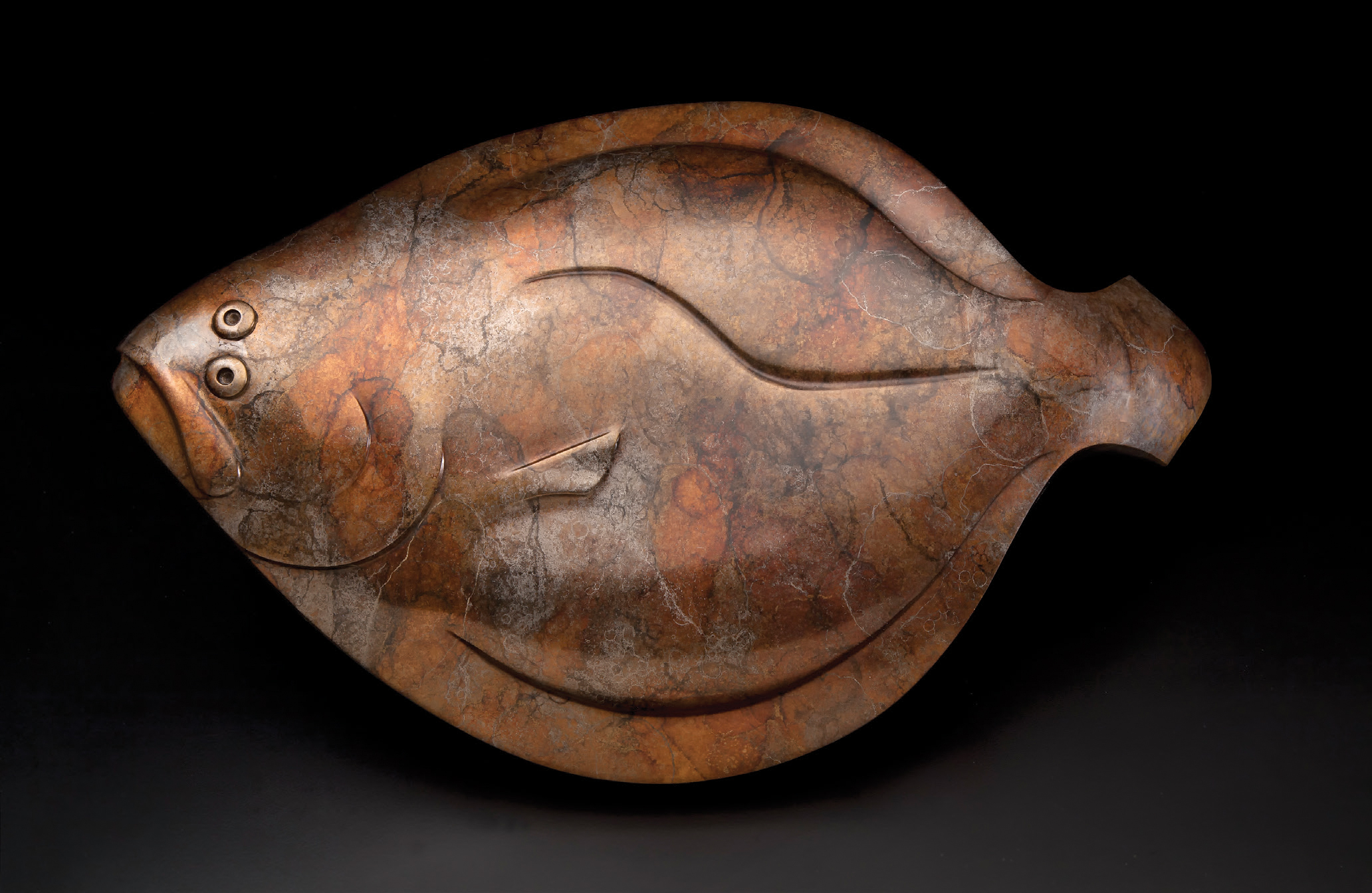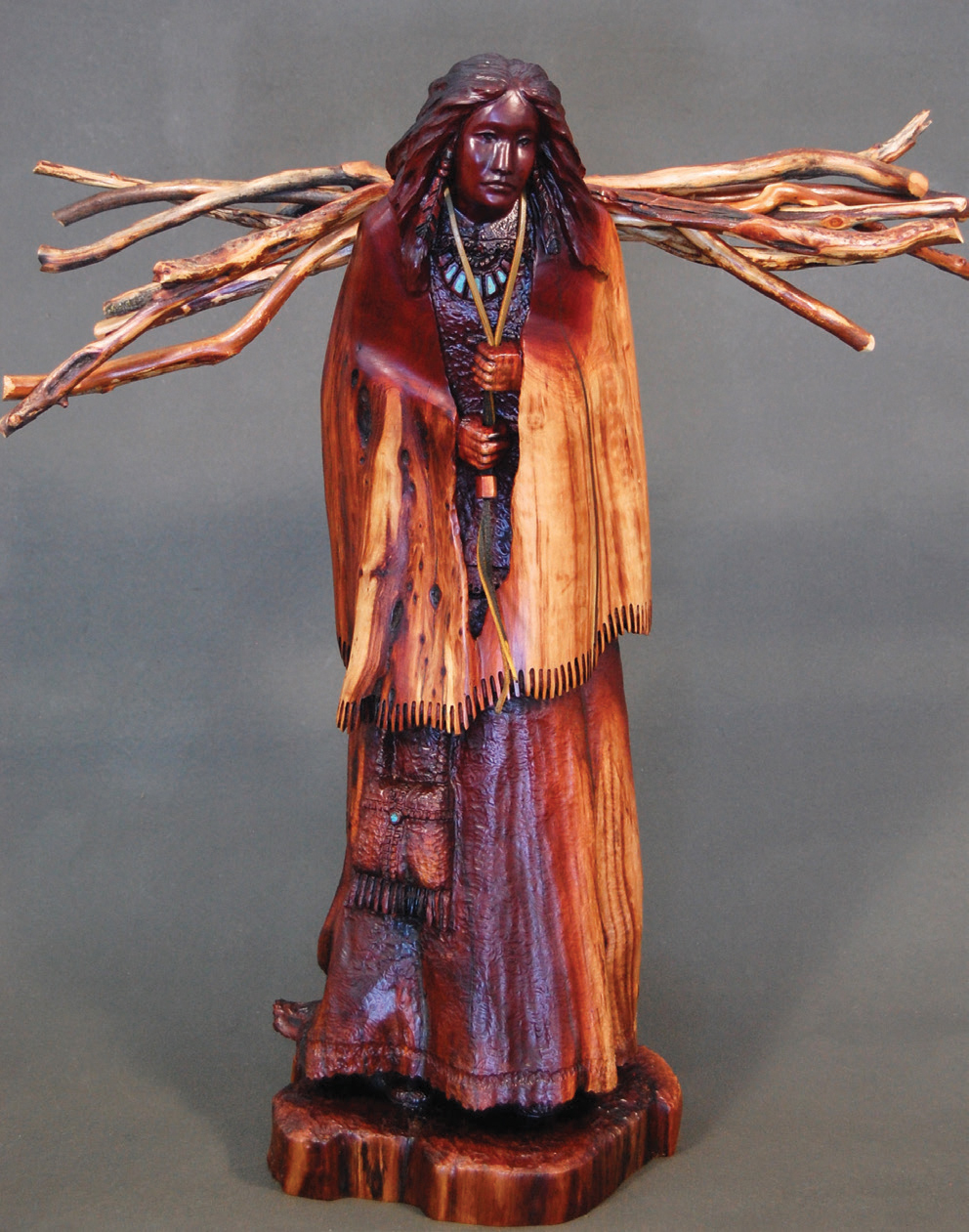
06 May Collector’s Notebook: Artful Upkeep
The prevailing mindset among most collectors is that sculptures are forever durable. Although bronze, wood, and even marble may seem less fragile than two-dimensional artworks, simple care and maintenance are a must in order to preserve a sculpture’s original beauty.
Prevention is key when it comes to the care of both indoor and outdoor sculptures, for it’s much easier to prevent damage in the first place than to reverse costly mistakes. Whether you are a seasoned collector or just beginning your love affair with this medium, you can benefit from the information provided by two excellent resources: Why Sculpture Maintenance? written by Jo and David DeDecker, and The Care of Bronze Sculpture by Patrick Kipper.
The DeDeckers are a brother-and-sister team who, for the past seven years, have owned and operated Sculpture Services of Colorado, a business that specializes in sculpture preservation. They also oversee the care of works located in the Benson Sculpture Garden in Loveland, Colorado. As an art historian who has focused on the field of sculpture for 20 years, Jo emphasizes that water, sunlight, and dirt are the most damaging elements for both indoor and outdoor bronzes. “In the case of indoor sculpture, placement is all-important,” she says. “If possible, display the pieces away from direct sunlight and any sources of heat. Should you choose to locate your sculpture near a window, it needs to be rotated on a regular basis. Also, avoid exposing the pieces to all household chemicals, such as bleach or ammonia, and never apply any type of oil to the surface.”
Knowledge about the creation of bronze sculptures is important to understanding the need for timely maintenance procedures. After a bronze is cast and assembled, the next step is to apply a patina, which gives the metal its color character. Despite the fact that a patina is created using heat and chemicals, its thin layer is highly susceptible to damage. For this reason, the artist’s final step in protecting the work is to apply a coat of lacquer and/or a layer of wax while the bronze is still warm. The DeDeckers explain: “Since this protection eventually wears off, we suggest waxing your indoor bronzes every five years using a light wax, such as Johnson’s Wood Paste. We stress the word ‘light’ when it comes to waxing, because heavy wax can build up, creating a coating that is very difficult to remove.”
Outdoor sculptures are even more susceptible to damage. Not only are they exposed to such elements as direct sunlight, rain, and blowing dirt, but there’s always the consideration of damage by animal urine or bird droppings. And again, placement is important. If you have a sprinkler system, make certain that the water does not hit the sculpture, as minerals from the water can build up on the surface. In the case of fountains, it’s important to clean off the mineral residue on an annual basis.
Kipper shares additional insights into the care and maintenance of outdoor bronzes: “Once temperatures are certain to remain above freezing, I wash all patinaed surfaces with clean, potable water. Smaller pieces can be submerged in a bucket. Wash with a neutral detergent, such as Ivory, using a cloth or soft bristle brush, and then rinse and dry with a soft cloth. Allow metal surfaces to dry in the sun until they are ‘warm to the touch.’ Using a soft bristle brush, apply a very thin coat of wax, such as Johnson’s Paste Wax, Trewax, or even Kiwi shoe wax, to the warm surfaces. Make certain the surfaces are thoroughly dry. Bronze is a porous material, and any retained water may later freeze, causing the metal, not the seams, to crack. Once the wax has had time to dry, you can buff it to a shine with a soft cloth.”
As to the care of wood sculptures, carver Bob Boomer stresses that collectors need not worry if there are fine cracks in the wood. “Most of us work on wood that has been outside for years and is thoroughly dry, so it should not crack further. Sometimes I may sand an area and fill in tiny cracks; other times, I may leave them as they are.” He suggests simply keeping wooden works dusted, and if necessary, using a product such as Liquid Gold, which is a cleaner and not a wax.
Stone mediums, such as marble and alabaster, require different care. Artist Gerald Balciar explains that after completing a piece, he applies two to three coats of Future Floor Wax to the work, and after that no further waxing is necessary. “You do need to realize, however, that the oil from your hands can cause the marble surface, especially white or other light hues, to discolor,” he says. “If this happens, the stain can be removed by gently washing the piece with soap, such as Ivory or dishwasher detergent.”
The majority of artists agree that bronze and even wood sculptures will tolerate a moderate amount of handling. However, similar to marble, the oil from your hands may eventually cause the patina or other surfaces to darken. It’s also wise to remove rings and other jewelry if you plan to pick up the pieces, as they can scratch or even gouge an artwork.
Seeking to push the creative envelope, many sculptors now offer interesting choices beyond the realm of the standard bronze. For instance, sculptor Tim Cherry has created a wide variety of images fashioned in stainless steel. “Because the material is less porous than bronze, these do not require waxing,” he says. While most of his animal figures have lots of detail, a recent sculpture, Flat Fish, features flat surfaces. If handled, fingerprints will show, but they can easily be wiped off using a soft cloth.
A number of sculptors are now working with mixed media, adding details such as inlaid stones and reclaimed wood. In the case of artist J. Christopher White, of Loveland, Colorado, many of his pieces are a combination of wood and bronze. For maintenance, he suggests applying a very thin coat of carnauba wax to both the bronze and polished wood surfaces, but avoid applying anything to weathered wood segments. “With both bronze and wood, reflection offers a 90 percent protection from damage. For that reason, it is wise to keep their surfaces shiny,” he says.

Sculptor Bob Boomer repaired the sticks on the back of this sculpture after they broke during shipping.
If all else fails and a sculpture is damaged, there are solutions available. The DeDeckers perform conservation services, which entail cleaning and minor repairs. “If your work has been broken or severely damaged, then you will need restorative services, which are best provided by the original artist,” Jo advises.
Boomer shares that he’s successfully repaired wood sculptures. “Living in California, I often have clients whose work gets damaged in an earthquake,” he says. “In the case of a client with a cowboy figure whose hat was broken off, I was able to carve a new hat and reattach it on the figure.” Conversely, Balciar relates, “I can polish out small scratches, but if the piece is broken, I simply have to create a new image.”
By following these simple procedures for cleaning and maintenance, owners can rest assured that their sculpture collections will provide them with a lifetime of beauty and pleasure.
Sculpture Care and Maintenance
• Avoid direct sunlight, dust, and water, as these will damage
any medium of sculpture.
• Avoid contact with household chemical substances,
especially harsh cleaning products and oils.
• Bronze sculptures require regular cleaning and waxing.
• Avoid handling indoor sculpture as much as possible, and
remove rings and other jewelry before doing so.
• If artwork has suffered major damage, you will need restorative
services by the original artist or a conservation specialist.






No Comments